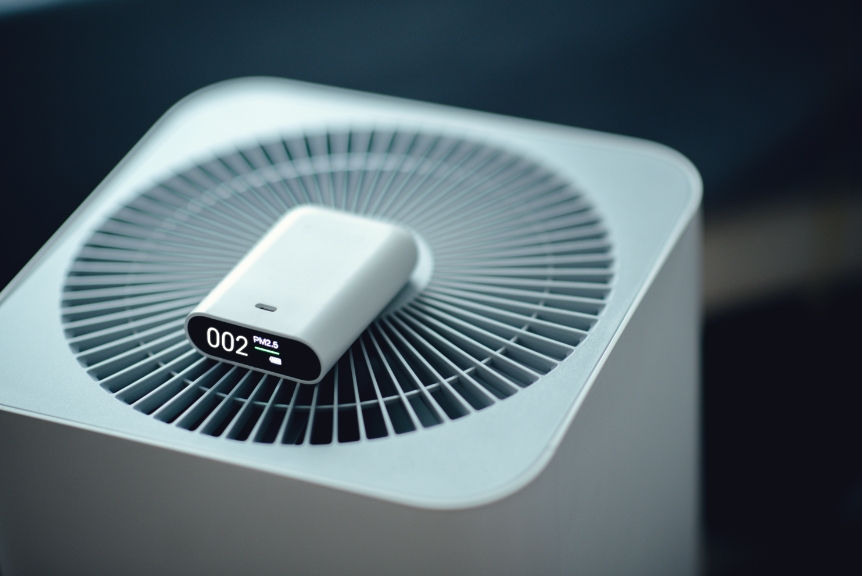
Tiny particles floating in the air can significantly affect its quality, as well as pass through vents and other openings of homes and buildings. Some of these particles can be toxic and harmful to one’s health, especially when a person has been exposed to it for too long. Checking the air quality inside your home thus becomes an important step in ensuring the safety of your household. Here are some of the ways that you can do this:
- Watch Out For Health Problems
Declining air quality can mean that there’s a lot of chemical emissions or dust in your area. It’s also possible that molds are present, which are often found in humid, wet, or damp places. More often than not, low air quality can trigger health problems, so if any of your household members experience the following, it’s likely a sign that the air quality inside your home is declining:
- Allergies And Irritation: Floating particles in the air usually cause these. If you are experiencing any allergic reaction on your skin, eyes or throat before, it’s a sign that the air quality is compromised.
- Common Sickness: Polluted air can contain different particles that can cause problems in people who have asthma or allergies. It can also cause headaches, colds and nausea.
- Difficulty in Breathing: This happens when the quality of the air is terrible. This means that airborne particles like dust, pollen, and other dangerous substances are present inside your house, and prolonged exposure to these may lead to serious respiratory problems.
- Get An Air Quality Monitoring System
An air quality monitoring system will record and distinguish the different airborne particles present inside your home. Most of these systems can detect dust particles, airborne allergens, and pollutants. This system also contains features that show the temperature and humidity to minimize or completely prevent the growth of molds, which can contaminate the air quality in your home. If you want real-time updates on the condition of the air in your home, an air quality monitoring system may be the best choice so that you and your family won’t be exposed to unhealthy air.
- Perform A Radon Test
A radon test specifically detects radon gas levels trapped inside your home. Radon is a radioactive gas that comes from the decomposition of uranium, which is colorless and odorless. Radon gas can be present in the soil and air, though in very low levels. However, prolonged exposure may lead to respiratory problems and even lung cancer.
When it comes to testing, you can opt for either a short-term or long-term radon test. If you want a fast and generally reliable result, the short-term test may give you an overview of radon gas levels in less than a week. It can also help you decide if you need to conduct a long-term radon test, which usually spans three months to one year to verify any alarming results from the short-term test. Radon test kits are available in hardware stores, home shopping centers, and the website of online retailers.
- Perform A Carbon Monoxide Test
Similar to radon, carbon monoxide (CO) is also colorless and odorless, but can be life-threatening when you become exposed to elevated levels. Known as a silent killer, CO is a by-product of carbon dioxide (CO₂), which comes from burning wood, fuel, oil, and other energy sources.
Performing a carbon monoxide test will determine the CO levels inside your home and ensure that the quality of the air you breathe is not compromised. There’s also an option to install a CO alarm system so you and your family can be protected 24/7.
- Hire Professional Services
In case air quality test kits or systems might not be available in your area, hiring professionals to do the testing can also be an option to save time and effort. Professional air quality service contractors have the proper equipment and techniques that can determine the air quality inside your home. They can also perform tests for mold infestation, wall paint, chemicals, and other pollutants in your home, which can be quite expensive and not always available on the local market.

Ways To Maintain Good Air Quality
- Check Air Filters Regularly
Conducting regular check-ups on your air filters will significantly help in maintaining excellent air quality inside your home. Standard air filters must be checked every month or two, unless you have allergies and pets. For the latter, the checking cycle should be more frequent to prevent pollution, dust, fur, and pollen from floating inside the house.
- Install An Air Purifier
An electronic air purifier outperforms other types of air purifiers, making it one of the top choices if you are planning to purchase one. The average price of an air purifier ranges from $150 to $300, but it’s worth the expense if you think about the benefits it could offer, such as letting you avoid hospital stays or getting medication for recurring allergies or respiratory illnesses.
Takeaways
Having excellent air quality is an essential factor in keeping your family safe. Now that you know the ways to check the air quality inside your household, you can be more proactive and don’t have to wait for signs that air quality in your house is declining. With the tips mentioned above, you and your loved ones can enjoy fresh, clean, and healthy air indoors.




 POSTED BY
POSTED BY 

